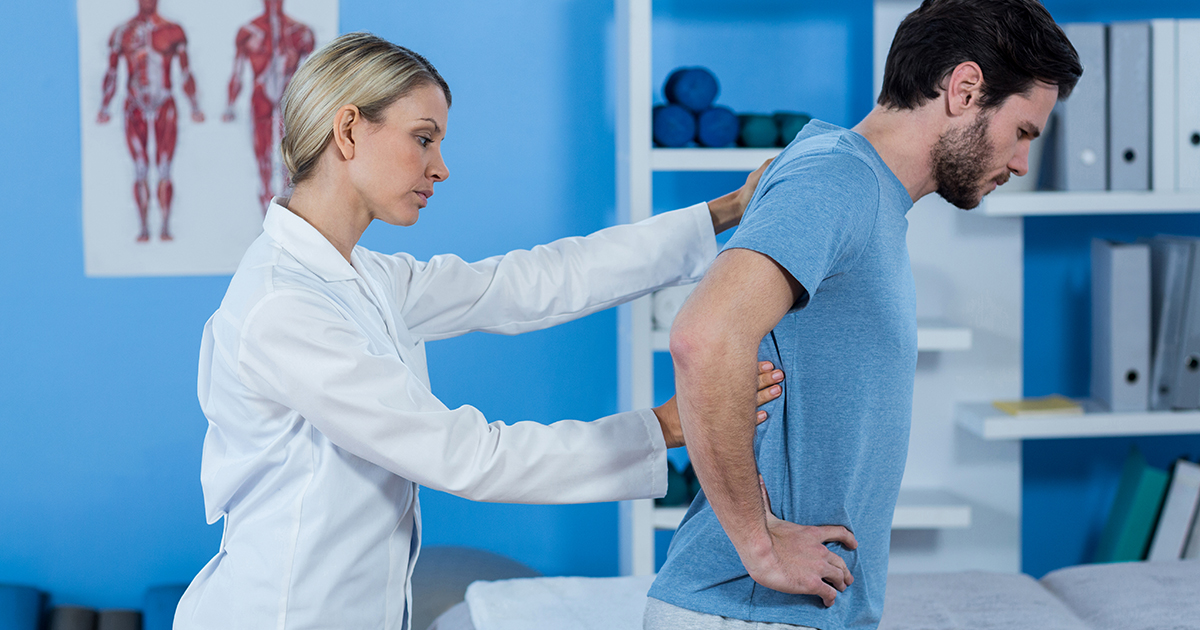
What to Do After Suffering a Back Injury
Your back, in addition to being the location of the spinal column, has layer upon layer of muscles that connect to the neck, the scapulae, and along the spine. A healthy back is essential to being able to stand upright, stay balanced, and move. If your back is injured, even subtly, it can adversely affect everyday maneuvers such as getting out of bed, sitting down, standing up, bending down, and even walking.
What Types of Back Injuries Exist?
Back injuries may be minor or serious and can be caused by a number of different events. The most common type of back injury is a strain or sprain, which involves the stretching or tearing of muscles in the back. Other back injuries include:
- Herniated disc
- Spinal cord damage
- Spondylolisthesis
- Spinal stenosis
- Vertebrae fractures
What Causes Back Injuries?
Common causes for these back injuries include:
- Motor-vehicle accidents
- Slip and fall accidents
- Heavy lifting
- Sports accidents
- Bicycle accidents
- Assault
- Workplace accidents
Staying safe at work can help you prevent injuries. Learn more about preventing back pain and injuries at work. [1]
Treatment Options for a Back Injury
When you suffer a back injury, your first priority should be to seek medical attention as soon as possible. Depending on the severity of the injury, your doctor may order imaging tests such as X-rays or an MRI to determine if there is any damage to the bones, ligaments, discs, or nerves in your spine. If your pain persists after initial treatment and physical therapy, further testing may be necessary to diagnose spinal stenosis or other problems in the spine.
Chronic pain can be a debilitating part of life after suffering a back injury. It is typically defined as pain that lasts longer than three months, and it can cause an array of physical, mental, and emotional issues. Chronic pain can be caused by a range of factors such as nerve damage, inflammation, muscle tension, or poor posture.
Your doctor may also perform a physical exam to assess muscle strength and range of motion. Your doctor may also ask about any recent activities that could have caused the injury as well as any changes in daily activities that could result from the injury. In some cases, blood tests or nerve conduction studies may also be recommended by your doctor to help make an accurate diagnosis.
Medications
Medications such as muscle relaxants and anti‐inflammatory drugs for pain relief as well as counter pain relievers and other therapies like bed rest or regular exercise to improve symptoms and reduce pain signals over time.
Physical Therapy
Physical therapy is a common and effective method of treatment for back injuries. A physical therapist will work with you to develop a personalized treatment plan based on your specific injury and symptoms. Here are some common types of :
- Stretching and Strengthening Exercises – A physical therapist will often recommend a series of exercises designed to stretch and strengthen the muscles in the back, abdomen, and legs. This can help reduce pain, improve range of motion, allow more physical activity and prevent further injury.
- Manual Therapy – This type of therapy involves hands-on techniques such as massage, mobilization, and manipulation to help alleviate pain and improve mobility in the back.
- Heat and Ice Therapy – Applying heat or ice to the affected area can help reduce inflammation, alleviate acute pain, and promote healing.
- Electrical Stimulation – Electrical stimulation uses small electrical currents to stimulate the muscles in the back, which can help reduce pain and improve muscle strength.
- Ultrasound Therapy – This type of therapy uses high-frequency sound waves to promote healing and reduce pain in the affected area.
- Education and Prevention – A physical therapist will often provide advice on how to prevent future back injuries, such as proper posture, body mechanics, and lifting techniques.
Massage Therapy
Therapeutic massage can help loosen tense muscles and decrease muscle spasms, which can help ease back pain.
Chiropractic
Chiropractic adjustments can help improve alignment and reduce inflammation in the back, which can lead to a decrease in acute pain.
Ice and Heat
Applying ice to the affected area for the first few days to reduce swelling is usually recommended, followed by switching to heat (such as a hot water bottle or warm compress) to increase blood flow and promote healing. [2]
Legal Help for a Back Injury
If you have suffered a back injury, it is imperative that you seek immediate medical attention. Back injuries can lead to more severe conditions, such as partial or complete paralysis, if there is a serious injury that is not addressed.
If you sustained a back injury at work, you can file a workers’ compensation benefits claim. If the injury was caused by the negligent, reckless, or wrongful actions of another, you may pursue compensation by filing a personal injury claim against the at-fault party. A knowledgeable personal injury lawyer can help you with either process.
A back injury can have a devastating effect on a person’s job and home life. If you have sustained a back injury in Nevada, the experienced Las Vegas back injury attorneys at Shook & Stone can help you determine who is at-fault and then pursue just compensation in civil court. To learn more about your rights and to find out if you have a valid claim, call us today at 702-570-0000 for a free consultation.
Sources:
[1] Simple ways to prevent back pain at work. (2021, June 3). Mayo Clinic. https://www.mayoclinic.org/healthy-lifestyle/adult-health/in-depth/back-pain/art-20044526
[2] Ice Or Heat For Back Pain Relief & Injury? (2018, February 24). YouTube. https://www.youtube.com/watch?v=vqFcX7PZWqk
 Partly Cloudy
Partly Cloudy What Makes an Injury Catastrophic?
What Makes an Injury Catastrophic? 